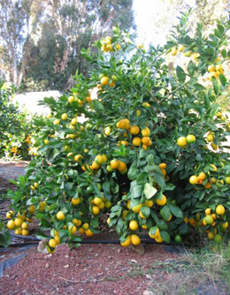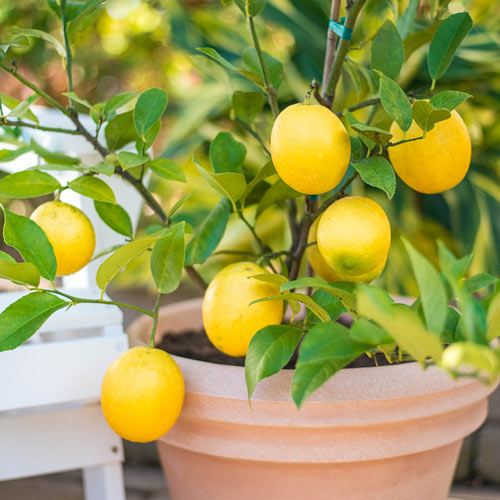
One major benefit of Meyer lemon trees is that they are self-fertile. If the temperature drops below 50 degrees Fahrenheit, you should bring your Meyer lemon tree indoors until it heats up again. Meyer lemon trees thrive between roughly 50 and 80 degrees Fahrenheit. It’s also a good idea to place rocks and water in the saucer beneath your garden pot, so that humidity will rise up. If you have an indoor Meyer lemon tree, mist it daily. You can test this by pressing your finger into the soil down to your second knuckle and seeing if the soil feels dry or moist.Ĭitrus leaves crave humidity. Water when the upper two inches of the soil is dry.
/cdn.vox-cdn.com/uploads/chorus_image/image/66928266/AdobeStock_320463231.0.0.jpeg)
The best method is to water deeply but infrequently. Watering a Meyer Lemon TreeĬitrus trees need soil that is moist but not wet to thrive, especially if they are grown in pots. If this isn’t possible inside, consider investing in grow lights.
#Meyer lemon tree full#
Meyer lemon trees thrive in full sunlight, requiring 8-12 hours of direct sunlight per day, preferably from the southwest, whether indoors or outdoors. You can amend your soil to reach the desired pH level, either adding sulfur to increase soil acidity or lime to lower overly acidic soil. The soil can range between 5.5 and 6.5 pH. The trees require soil with good drainage and do well in loamy and sandy loam soils. Place the tree by a south-facing window.Place the potting mixture in the pot so that the crown of the roots rest just above the line of the soil.Place the tree in the center of the pot.Cut off dry roots and fluff matted roots.Create a potting mixture with peat moss, potting soil, and either vermiculite or perlite in the pot.Place a 2-inch layer of stone at the bottom of the pot.


It’s more disease-resistant, and insect-resistant. In 1975, the University of California introduced an all-new variety, called the “Improved Meyer lemon tree.” That’s the one we know and grow today. Unfortunately, this initial variety was very susceptible to disease, especially a fast-spreading virus that threatened the citrus industry in California in the 1960s by infecting nearby healthy citrus trees. The first Meyer lemon trees were introduced from China in 1908. Can bear fruit in as little as two years.Cross between lemons and mandarin oranges.Whether you choose to place one in your lawn or in your patio, your Meyer lemon tree can be both ornamental and a source of citrus sweetness. Meyer lemon trees can yield fruit in just two years after planting them.


 0 kommentar(er)
0 kommentar(er)
